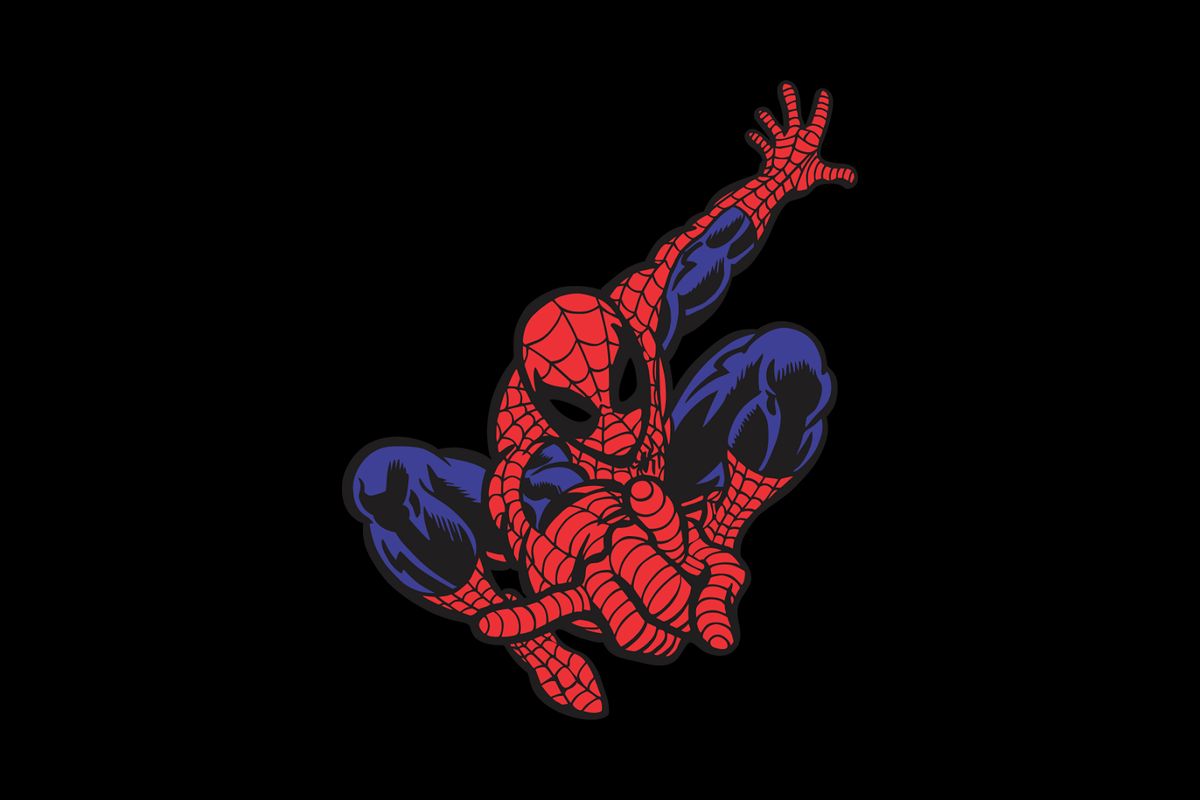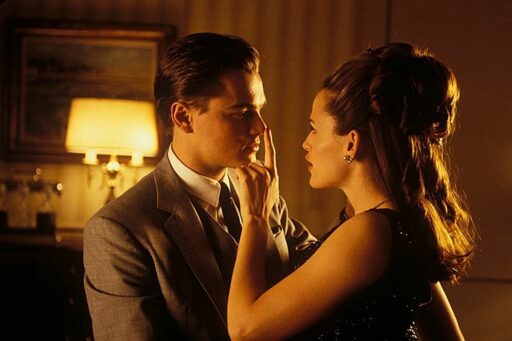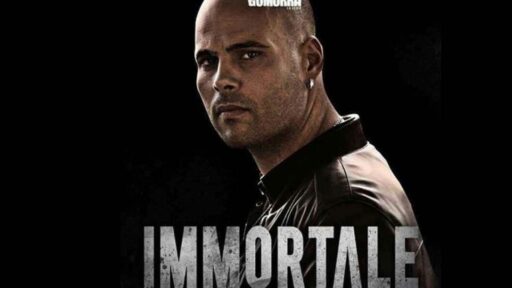Since his cinematic debut in 2002, Spider-Man has captivated audiences with his thrilling web-slinging across multiple movie franchises. From the original trilogy directed by Sam Raimi to the innovative animation of ‘Into the Spider-Verse,’ the Spider-Man movies have not only showcased the evolution of visual effects but also the depth of storytelling possible within the superhero genre. As we delve into the web-slinging legacy of Spider-Man, we explore the different portrayals, the technological advancements, and the cultural impact these films have had on fans and the film industry alike.
Key Takeaways
- Spider-Man’s cinematic journey began with Sam Raimi’s trilogy, setting a high standard for superhero movies with Tobey Maguire’s iconic portrayal and groundbreaking visual effects.
- The Amazing Spider-Man series offered a fresh perspective with Andrew Garfield’s performance and further exploration of Spider-Man’s abilities, despite its shorter run.
- Tom Holland’s Spider-Man brought the character into the Marvel Cinematic Universe, introducing new web-slinging technology and multiverse storylines that expanded the character’s reach.
- ‘Into the Spider-Verse’ revolutionized the superhero genre with its unique animation style and storytelling, introducing Miles Morales and diversifying the Spider-Man narrative.
- Across all films, Spider-Man’s web-slinging remains a visual spectacle, evolving with technology and continuing to captivate audiences with its blend of action and emotion.
The Dawn of a New Hero: Sam Raimi’s Spider-Man Trilogy


Tobey Maguire’s Iconic Portrayal
Tobey Maguire’s embodiment of Spider-Man in Sam Raimi’s trilogy set a high standard for superhero portrayals. His performance captured the quintessential struggles and triumphs of Peter Parker, resonating with audiences worldwide. Maguire’s Spider-Man wasn’t just a hero; he was a relatable figure grappling with the complexities of life and responsibility.
The trilogy’s success hinged on several factors, but Maguire’s portrayal was undoubtedly central. His ability to convey vulnerability and determination made his character’s journey compelling. The films’ narratives allowed for a deep dive into Peter’s psyche, exploring themes of power, sacrifice, and identity.
The emotional depth Maguire brought to the role added a layer of authenticity that set the tone for future superhero films.
While some viewers have debated the merits of Maguire’s portrayal, the impact of his performance is undeniable. It laid the groundwork for the character’s cinematic future and left an indelible mark on the superhero genre.
Villains and Visual Spectacles
Sam Raimi’s Spider-Man trilogy is renowned for its compelling antagonists who not only challenge Spider-Man’s physical prowess but also his moral compass and secret identity. Each villain uniquely embodies the antithesis of Spider-Man’s values, representing a distorted mirror of his ‘great power and great responsibility’ mantra. The battles with these villains are not just physical confrontations but are also intellectual and emotional tests for both Spider-Man and the audience.
The trilogy’s villains are a diverse group, each with their own motivations and connections to Spider-Man’s personal life. Their discovery of Spider-Man’s identity adds a layer of tension and stakes to the narrative. For instance, the title: How Every Villain In Maguire’s Spider-Man Trilogy Discovered His identity, whether through Spider-Man’s voluntary unmasking or other dramatic revelations, creates a recurring theme of vulnerability and the consequences of heroism.
The visual spectacles of the trilogy set a new standard for superhero movies, with groundbreaking special effects that brought Spider-Man’s acrobatic combat and the villains’ unique abilities to life. The trilogy’s legacy in visual storytelling continues to influence the genre today.
Below is a list of common antagonists in the Spider-Man universe, showcasing the variety and depth of characters that have challenged our hero over the years:
- Green Goblin
- Doctor Octopus
- Sandman
- Venom
- The New Goblin
The Legacy of the Original Trilogy
The original Spider-Man trilogy directed by Sam Raimi has left an indelible mark on the superhero genre. Spider-Man 2, in particular, is often hailed as the pinnacle of the series, resonating with audiences and critics alike for its emotional depth and thrilling action sequences. The trilogy’s influence extends beyond its immediate run, setting a high bar for character development and special effects in superhero cinema.
The trilogy’s success can be quantified not just in box office numbers but also in its cultural impact. Here’s a brief look at the legacy it left behind:
- Established a template for superhero origin stories
- Paved the way for complex villains with relatable backstories
- Influenced the visual style of subsequent superhero films
- Solidified the superhero genre as a staple of modern cinema
The journey of Peter Parker, portrayed by Tobey Maguire, from an ordinary teenager to a superhero grappling with the weight of responsibility, has become a cornerstone of the Spider-Man mythos.
The commitment to continuity in casting and production across the trilogy also contributed to its cohesive storytelling, a practice that has become more common in franchise filmmaking. As we look back, the original Spider-Man films not only entertained but also shaped the landscape of superhero movies that followed.
Swinging into a New Era: The Amazing Spider-Man Series


Andrew Garfield’s Take on Peter Parker
Andrew Garfield’s portrayal of Peter Parker brought a new level of emotional depth and complexity to the character. His Spider-Man was not just a superhero but a deeply human character grappling with the consequences of his actions. Garfield’s performance highlighted the duality of Peter’s life, balancing the thrill of web-slinging with the weight of responsibility.
The Amazing Spider-Man series redefined the hero’s abilities, emphasizing a more grounded and realistic approach to web-slinging. The use of mechanical web-shooters, as designed by Peter himself, was a nod to the original comic book lore and a departure from the organic webbing of previous films. This change was not just a technical detail but a reflection of Peter’s ingenuity and resourcefulness.
The challenges faced by Garfield’s Spider-Man were not only physical but also emotional, as he navigated his relationships and the expectations placed upon him as a hero.
Garfield’s Spider-Man also faced formidable foes, with the emergence of Electro posing a threat unlike any other. The series delved into the complexities of Peter’s friendships, particularly with Harry Osborn, adding layers to the narrative and the protagonist’s journey.
A Fresh Spin on Spider-Man’s Abilities
The Amazing Spider-Man series introduced a new dynamism to Spider-Man’s web-slinging, showcasing a more grounded and visceral approach to his movement. Peter Parker’s discovery of his powers is depicted with a modern twist, incorporating elements of skateboarding and parkour into his repertoire. This fresh take on his abilities emphasizes Spider-Man’s agility and coordination, as he navigates the concrete jungle with a fluidity that mirrors the freedom of his comic book counterpart.
In contrast to previous adaptations, this series often chose to depict Spider-Man’s iconic web-slinging from a distance, or through rapid cuts, particularly during key action sequences. This stylistic choice may have toned down the spectacle of web-slinging, but it also lent a certain realism to the character’s movements, grounding him in a more believable world.
The Amazing Spider-Man’s portrayal of web-slinging establishes the flow and acrobatics of Spider-Man in ways previously undoable, capturing the essence of his character in a new light.
The technical aspects of bringing Spider-Man’s web-slinging to life on screen also evolved. The use of advanced camera rigs, such as the Spydercam, allowed for smooth transitions between buildings, capturing the exhilaration of swinging through New York City. The visual effects teams faced the challenge of translating Spider-Man’s signature movement into film, a task that requires as much creativity as it does technical skill.
The Impact of the Duology on the Spider-Man Saga
The Amazing Spider-Man series, although shorter than its predecessor, left a distinct mark on the Spider-Man legacy. The duology, starring Andrew Garfield, brought a new depth to the character of Peter Parker, exploring his complexities and vulnerabilities in a fresh light.
While the series may not have reached the same heights as the Raimi trilogy, it contributed significantly to the narrative and thematic development of the Spider-Man character. The films delved into the emotional resonance of Peter’s journey, much like the original trilogy, but with a modern twist that resonated with a new generation of fans.
The Amazing Spider-Man series redefined the hero’s struggle, echoing the trials faced by iconic characters like Luke Skywalker.
The series also set the stage for future adaptations, proving that Spider-Man could be reinvented time and again while still maintaining the core essence of the beloved superhero. It’s a testament to the enduring appeal of Spider-Man and his place in the pantheon of cinematic heroes.
The Marvel Cinematic Universe: Spider-Man’s Homecoming


Tom Holland’s Integration into the MCU
Tom Holland’s debut as Spider-Man in Captain America: Civil War was a pivotal moment for the character, marking the first time Spider-Man appeared in the Marvel Cinematic Universe (MCU). His portrayal of a young Peter Parker, eager to prove himself alongside the Avengers, resonated with audiences and set the stage for a new chapter in the Spider-Man legacy.
With the guidance of Tony Stark, Holland’s Spider-Man navigates the complexities of being a superhero while juggling the challenges of high school life. The blend of youthful exuberance and vulnerability brought a fresh perspective to the character that was distinct from his predecessors.
The integration of Spider-Man into the MCU also opened up new narrative possibilities, allowing for crossover events that were previously unimaginable. Holland’s Spider-Man not only starred in his standalone films but also played significant roles in ensemble MCU movies, showcasing the character’s versatility within a larger universe.
Innovations in Web-Slinging Technology
The Marvel Cinematic Universe (MCU) brought a new level of sophistication to Spider-Man’s web-slinging abilities. Tom Holland’s Spider-Man showcases a tech-savvy approach, with web-shooters that are not only mechanically advanced but also integrated with Stark technology, offering a variety of web types for different scenarios.
- Stark-enhanced web shooters
- Different web types for tactical use
- Integration with Spider-Man’s suit and AI
The seamless blend of practical effects and CGI has elevated the web-slinging sequences to new heights, making them some of the most thrilling aspects of the MCU’s Spider-Man films.
The use of the Spydercam system, a cable-suspended camera rig, has been pivotal in capturing the fluidity and dynamism of Spider-Man’s movement through the cityscape. This innovation, often coupled with post-production magic, has allowed for web-slinging scenes that are as close to comic book action as cinema has ever seen.
Crossover Spectacles and Multiverse Madness
The Marvel Cinematic Universe’s Spider-Man films have pushed the boundaries of superhero narratives, introducing audiences to a web of interconnected dimensions. Tom Holland’s Spider-Man faced not only the challenge of high school and local crime but also the complexities of the multiverse. In a daring crossover, ‘Spider-Man: No Way Home’ saw Peter Parker seeking the help of Doctor Strange (Benedict Cumberbatch), only to inadvertently threaten the stability of reality itself.
The multiverse concept has allowed Spider-Man to encounter versions of himself from alternate realities, each bringing their own history and battles with them. This narrative device has not only altered Parker’s future but the very fabric of the multiverse.
The consequences of these multiverse mishaps are far-reaching, with villains from different universes wreaking havoc in Parker’s world. Here’s a quick look at the impact:
- Villains from past Spider-Man films return, challenging the hero in unexpected ways.
- The multiverse storyline pays homage to the character’s rich history across various media.
- It sets the stage for future Spider-Man stories, potentially involving even more crossovers and characters.
The ‘Spider-Wars’ arc from the animated series hinted at this potential long before the MCU, showcasing Spider-Man’s ability to transcend dimensions. The multiverse has become a playground for creativity, forever changing the landscape of Spider-Man’s cinematic universe.
Into the Spider-Verse: Revolutionizing Animation and Storytelling


Miles Morales and the Expansion of the Spider-Verse
The introduction of Miles Morales into the Spider-Verse not only brought a fresh face under the iconic mask but also expanded the narrative possibilities with the concept of the multiverse. This allowed for a rich exploration of identity and the different paths one can take as a hero. Miles’s journey is a testament to the universal appeal of the Spider-Man ethos, emphasizing that anyone can wear the mask.
The multiverse theme is a cornerstone of the Spider-Verse, offering alternate character versions and a canvas for diverse storytelling. Miles’s struggle to balance his personal identity with his superhero persona highlights the responsibility inherent in becoming Spider-Man.
The cultural significance of Miles Morales cannot be understated. As an Afro-Latino teenager, he represents a community often underrepresented in superhero media. His connection to hip-hop culture and the streets of Brooklyn adds a layer of authenticity and relatability to his character.
- Miles Morales: Afro-Latino Teenager
- Identity: Struggle and Responsibility
- Cultural Significance: Representation and Authenticity
Artistic Innovations and Homage to Comic Book Aesthetics
The Spider-Verse film not only pushed the boundaries of animation but also paid a profound homage to the aesthetics of comic books. The visual elements mirror live-action films, with scenes that are almost direct recreations from the comics, yet uniquely inverted in color to give a fresh perspective. The character designs and onomatopoeia are seamlessly integrated, capturing the essence of comic book style in a way that live-action adaptations often struggle to achieve.
The animation style of Spider-Verse represents a bold step in cinematic storytelling, blending traditional comic book elements with innovative animation techniques to create a visually stunning experience.
The minimalist approach, as seen in the works of artists like Sal Buscema, highlights the trade-offs and compromises inherent in serialized comic book production. Buscema’s tenure on Spectacular Spider-Man showcases a range of strategies to address these challenges, from abstraction to simplification, without sacrificing the core elements that define Spider-Man.
- The homage to comic book aesthetics is evident in the detailed backgrounds and character expressions.
- Action sequences are crafted with a dynamic fluidity that echoes the panels of a comic book.
- The use of split screens and transitions pays tribute to comic book layouts, enhancing the narrative flow.
The film’s artistic direction has set a new standard for animation and storytelling, leaving a lasting impact on both the Spider-Man saga and the broader realm of superhero media.
The Cultural Impact of Spider-Verse
Spider-Man: Into the Spider-Verse not only revolutionized animation but also left an indelible mark on the cultural landscape. The film’s exploration of identity resonated deeply with audiences, presenting a diverse tapestry of characters that expanded the notion of who could don the Spider-Man mantle.
The movie weaves together the extended Spider-Man canon, connecting various portrayals from comics, movies, and animation, and in doing so, celebrates the core message of Spider-Man: anyone can be behind the mask.
The soundtrack, particularly the song "What’s Up Danger?", became emblematic of the film’s assimilation of contemporary culture, blending musical genres in a way that mirrored the protagonist’s own hybrid cultural identity. The impact of this narrative and stylistic choice is evident in the following points:
- The introduction of Miles Morales, an Afro-Latino Spider-Man, challenged traditional superhero norms and provided representation for underrepresented communities.
- The film’s homage to comic book aesthetics and its innovative animation style influenced subsequent works in the genre.
- The success of Into the Spider-Verse has led to heightened anticipation for its sequel, Spider-Man: Across the Spider-Verse, with early reactions suggesting another groundbreaking entry in the saga.
Conclusion
From the daring acrobatics of Sam Raimi’s original trilogy to the multiverse-spanning adventures of ‘Spider-Man: Across the Spider-Verse’, the legacy of Spider-Man movies has left an indelible mark on the landscape of superhero cinema. Each film has brought its own unique flair to the web-slinging hero, capturing the imagination of audiences with spectacular visuals and heartfelt storytelling. As we reflect on the evolution of Spider-Man’s cinematic journey, it’s clear that the character’s ability to swing between skyscrapers is more than just a thrilling spectacle; it’s a symbol of the creativity and innovation that has propelled the franchise to such great heights. Whether it’s the nostalgic charm of Tobey Maguire’s portrayal, the fresh twists of the animated Spider-Verse, or the interconnected narratives of the Marvel Cinematic Universe, Spider-Man’s film saga continues to resonate with fans old and new, proving that the web-head’s appeal is as timeless as his message: with great power comes great responsibility.
Frequently Asked Questions
How has web-slinging been portrayed differently across the Spider-Man film franchises?
Web-slinging in Spider-Man films has evolved with technology and creative direction. The original Raimi trilogy used a blend of practical effects and CGI, with iconic scenes like the unbroken sequence of Spider-Man learning to swing. The Amazing Spider-Man series introduced a more realistic take on Spider-Man’s abilities, while the MCU films integrated Tom Holland’s Spider-Man into a larger universe with advanced web-slinging gadgets. Into the Spider-Verse revolutionized the portrayal with its unique animation style and storytelling.
What innovations in web-slinging technology are seen in the MCU Spider-Man films?
The MCU Spider-Man films introduced various web-slinging innovations, such as different types of webbing for combat and utility, web wings for gliding, and the integration of Stark technology into Spider-Man’s suit. These advancements allowed for more dynamic action sequences and a fresh take on Spider-Man’s classic abilities.
How did the ‘Spider-Verse’ films impact the portrayal of Spider-Man?
Into the Spider-Verse expanded the concept of Spider-Man by introducing multiple characters from different universes, each with unique web-slinging styles and abilities. The film’s groundbreaking animation and homage to comic book aesthetics allowed for a diverse and visually stunning portrayal of web-slinging and superhero action.
How did Tobey Maguire’s portrayal of Spider-Man influence the character’s legacy?
Tobey Maguire’s portrayal in the Sam Raimi trilogy set a high standard for the character, with his performance capturing the essence of Peter Parker’s struggles and heroism. The trilogy’s success and Maguire’s iconic role contributed significantly to the popularity and enduring legacy of Spider-Man in cinema.
What role does web-slinging play in the overall Spider-Man saga?
Web-slinging is a signature aspect of Spider-Man’s character, serving as both a thrilling mode of transportation and a versatile tool in combat. It’s a visual spectacle that defines the character’s agility and creativity, and it’s been a central focus in each film’s action choreography and visual effects.
How do the Spider-Man films handle the character’s learning curve with web-slinging?
The Spider-Man films often depict Peter Parker’s initial struggles and gradual mastery of web-slinging, reflecting his journey of self-discovery and responsibility. From his first awkward attempts to his confident aerial maneuvers, the learning curve is a narrative device that showcases his growth as a superhero.






